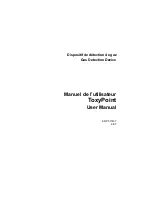
Press the Retune button
(15)
every few minutes or whenever the background tone rises
to an unacceptable level. You are now searching in ‘inland audio discrimination mode’.
The presence of a metal target will be indicated by the increasing intensity of the tone.
Signals from targets likely to be valuable will give a high pitch tone. Signals from targets
likely to be worthless will give a low pitch tone.
For beach hunting
switch the site selector
(16)
to ‘beach’ and press the retune button.
Reset the threshold point if necessary. You are now searching in ‘beach preset
discrimination mode’. Signals from targets likely to be valuable will give a tone increasing
in intensity. Signals from targets likely to be worthless will be ignored.
The conTRolS And whAT They do
(14) The on/off/sensitivity control
switches the machine ‘on’ and sets the sensitivity level.
The detector sensitivity should normally be set at the point of threshold, that is the point at
which a background tone is just about audible. The point of threshold will be found within
the green area on the scale. Set the threshold point with the detector head held just above
the surface of the ground. Switch the machine ‘on’ and with the other hand press the retune
button
(15)
. Keep the retune button depressed while you rotate the sensitivity control to a
point where the background tone is just audible or just absent. (this is called ‘the threshold
point’ ). Then release the retune button and the detector is ready. In severe ground
conditions (wet salt beach or mining areas for example) it may be necessary to reduce
sensitivity to below the threshold point in order to achieve stable operation.
(16) Inland/beach site selector.
The detector can ignore the signals from some metals
which are likely to be worthless. Small iron objects like building nails are the main source
of false signals, especially on farmland sites. The CS770XD recognises these objects and
allocates them a low pitch tone in Inland Mode or ignores them completely in Beach Mode.
Items that are most likely to be valuable give a high pitch tone in Inland Mode or increasing
in intensity (volume) in Beach Mode.
(15) Retune Push-button.
The purpose of the Retune push-button is to keep the
detector working at peak performance by maintaining the point of threshold set on the
sensitivity control. For example, moving from dry ground to wet ground may cause the
background tone to gradually increase to an unacceptable level. Pressing the retune button
momentarily will bring the background tone to the point of threshold again.
If the retune button fails to have this effect, it is probably necessary to re-set the sensitivity
level. It is good detecting practice to press the retune button every few minutes or
whenever you feel that that the detector may have drifted away from its sensitivity setting.
Assembly
Join the two stem sections
(5)(2)
together. Wind the search-head lead
(9)
around the
stem as shown in the photograph. Adjust the stem for length according to your height
(it’s easier on your back if you can stand up straight while detecting) and tighten the
twistlock stem adjuster
(6)
. Check that the search-head
(7)
is parallel to the ground when
being swept in an arc and tighten (be careful not to over-tighten) the search-head retaining
screw
(8)
. (Keep these parts clean - if they become covered in mud or sand wash and
dry these parts at the end of a day’s detecting. Don’t allow any form of lubricant onto the
rubber friction washers.)
Battery
Push back the retaining clip and remove the cover
(13)
of the battery compartment
(12)
.
Fit a 9 volt battery (MN1604, PP3 or equivalent). There are guide strips to ensure the battery
is fitted the right way round. Do not force the battery. It should slide in easily to connect with
contact strips in the compartment. Remove the battery if the detector is to be stored for more
than a few days.
Searching Technique:
Try out a variety of targets to test the reaction of the audio target
analysis system. Iron nail, gold ring, £1 coin, for example. Check the intensity and the
pitch of the signal. Note how the detector signal changes and, as you gain experience






















